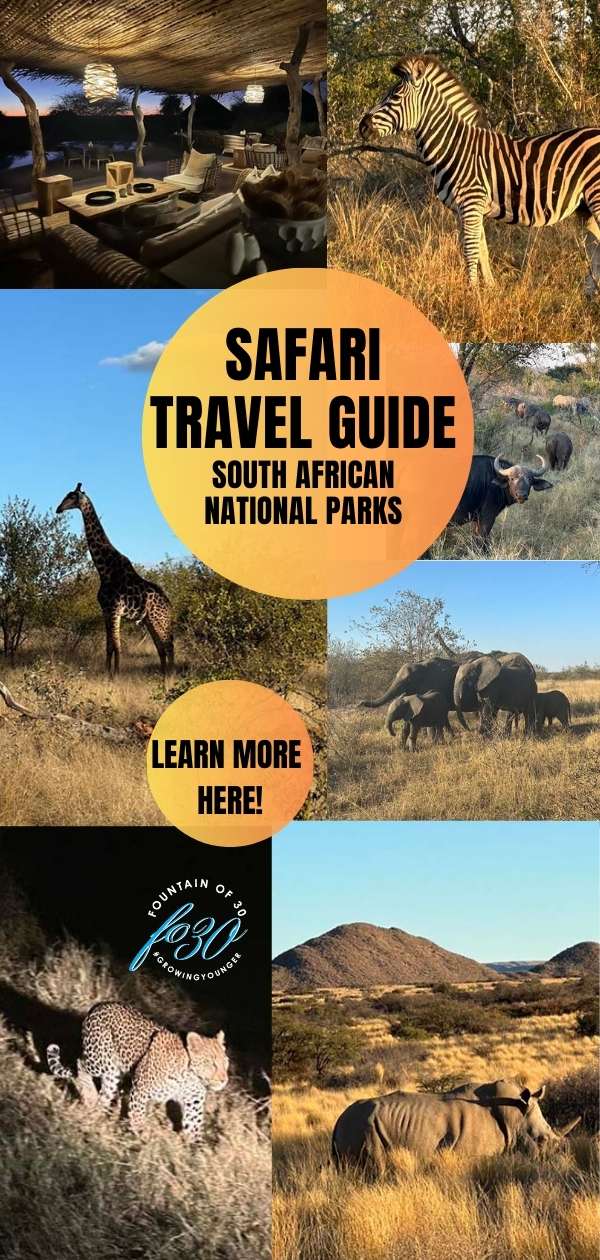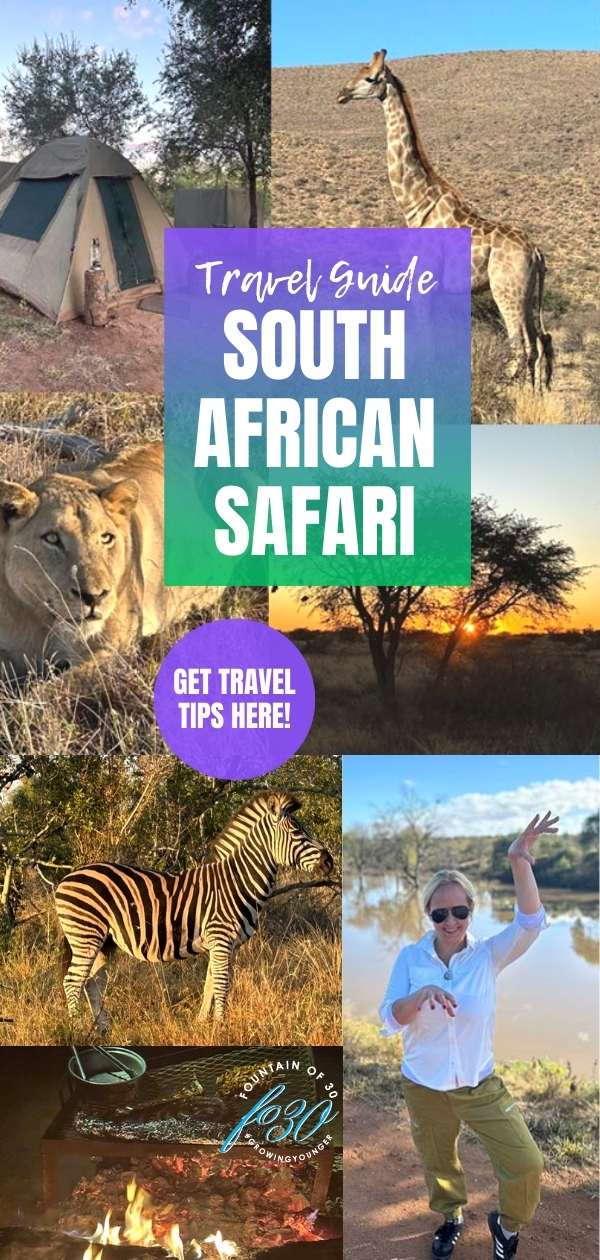Going on an African safari is a bucket list trip for many of us, and South Africa’s Kruger and Kalahari national parks definitely deliver. Seeing the Big Five (lion, leopard, elephant, rhino and buffalo) and all the other animals in their natural habitats and being truly in the wild is well worth the journey. Here is my recent adventure in South Africa along with safari travel tips.
South African Safari Travel Tips
While there are many ways to go on safari, we do suggest working with an organizer who has connections on the ground to coordinate drivers, camps and guides. There are a lot of moving parts and it’s not like you can call a cab in the middle of the savannah, of course! Plus, having amazing guides will make your experience that much more incredible. Most camps, lodges, and even individual guides have Instagram accounts now, so you can get to know them and see what they are all about before you make a final decision.
It’s also wonderful to mix a walking safari or bush walks — where you are out in the bush with the animals — and the more standard game drives, where you are with a guide in an open-top vehicle (Land Cruiser or Land Rover customized for game drives, most likely). South Africa is home to multiple national parks and private game reserves, most of which offer various lodging and camping options depending on your bravery and ability (or lack thereof) to rough it.
YES! I LOOK FORWARD TO #GROWINGYOUNGER
PLEASE SUBSCRIBE ME TO YOUR MAILING LIST.
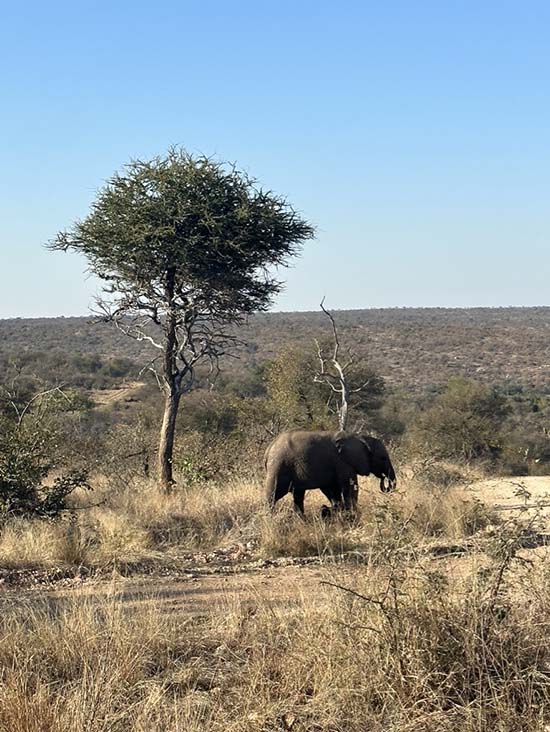
Camp Recommendations in Kruger
As for camp recommendations for those of us who don’t mind rustic but require actual showers and real beds, there are so many choices within Kruger (plus lots of excellent options for actual camping if that’s your thing). Also be aware that even the most luxurious camps will have times when electricity is minimized or even turned off, and eco-friendly measures of all kinds (refillable water bottles, leave-no-trace camping) are taken pretty much everywhere.
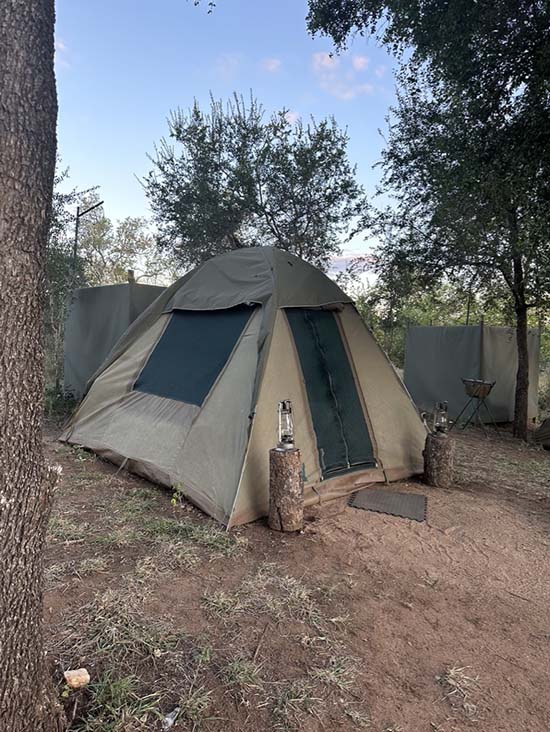
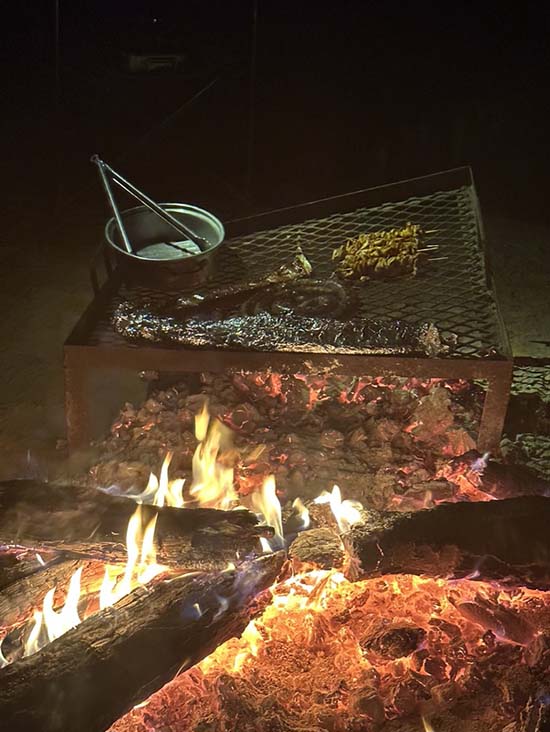
That said, Africa on Foot, which mostly operates in the Mopani forests of northern Kruger, was our choice for walking safaris, and it was definitely ideal. You’ll spend five to seven hours hiking in the bush in the mornings and then a break for lunch, followed by an evening game drive and dinner. They have temporary “glamping” tents and a team of porters and cooks who make everything seamless, and they even created an amazing braai — South Africa’s signature barbecue set-up — for us in the bush one night.
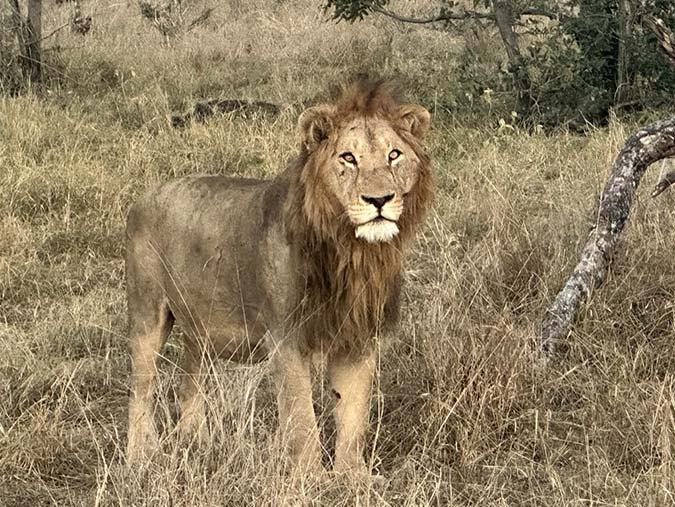
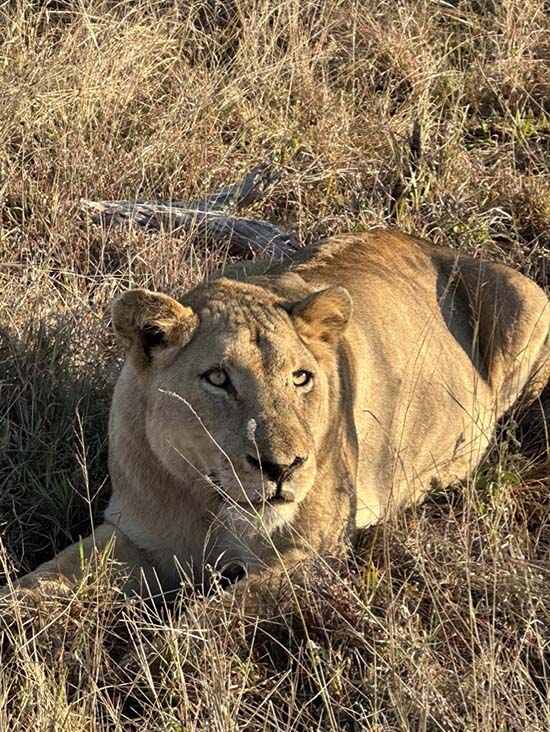
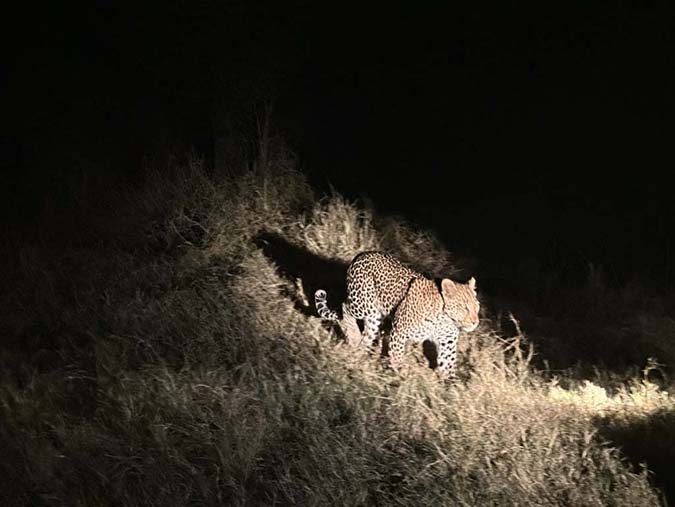
Sabi Sands
If you love the big cats as much as we do, you’ll also want to stay in Sabi Sands, which is part of greater Kruger. Known for its populations of lions, cheetahs, and the elusive leopard, Sabi Sands is a group of private reserves. There, Nottens Bush Camp was our choice! It’s family owned and retains a classic safari feel — they even use oil lamps at night and minimal electricity (although they do have WiFi).
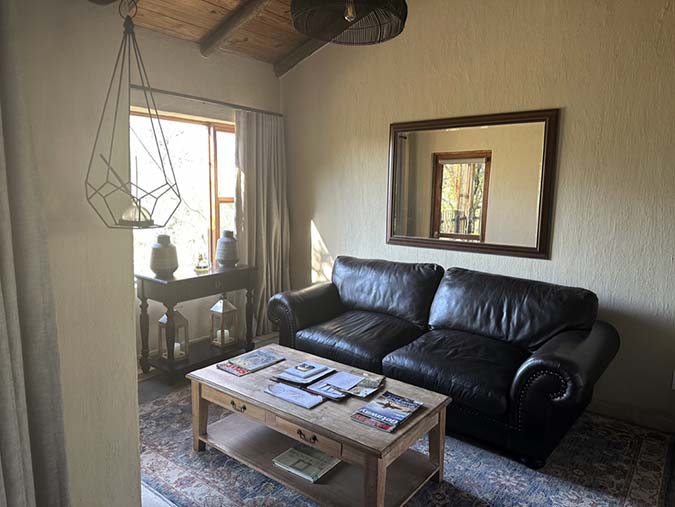
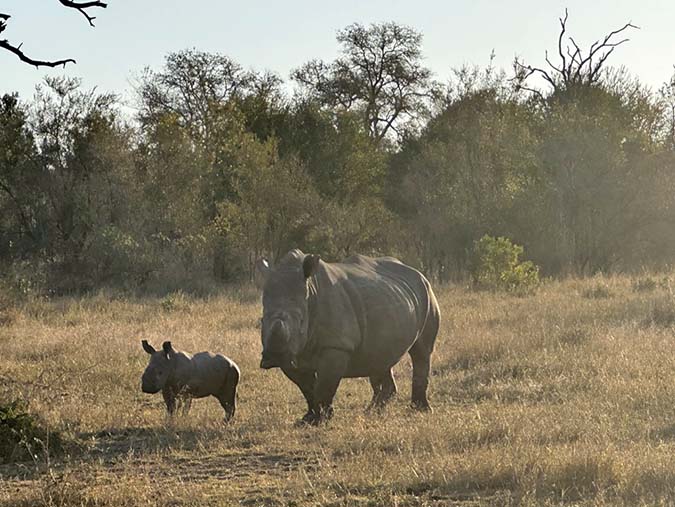
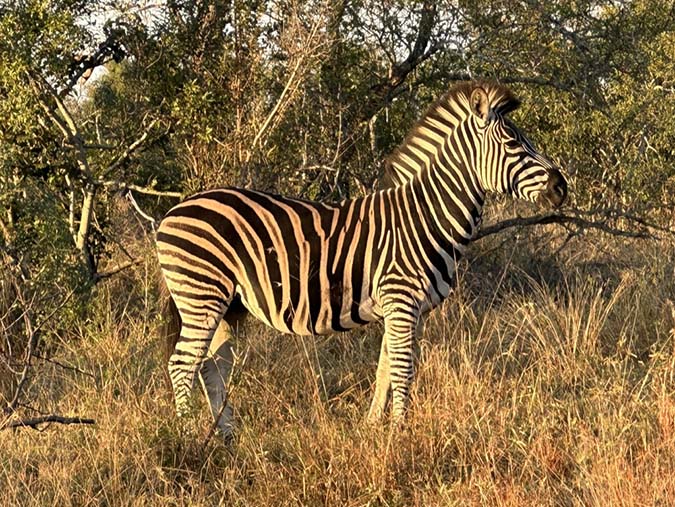
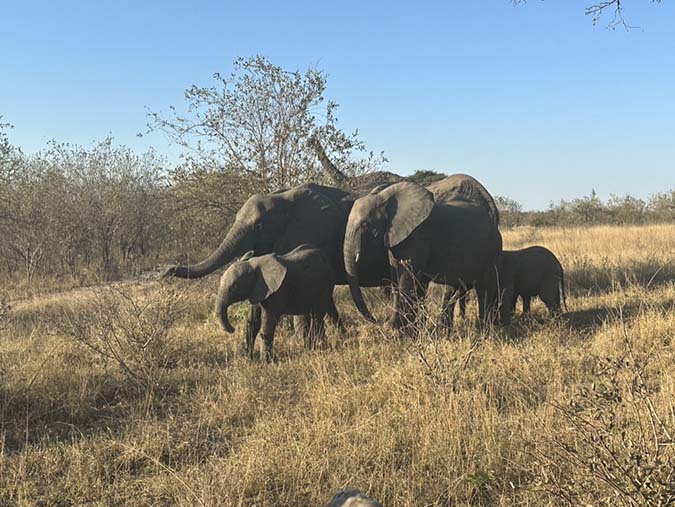
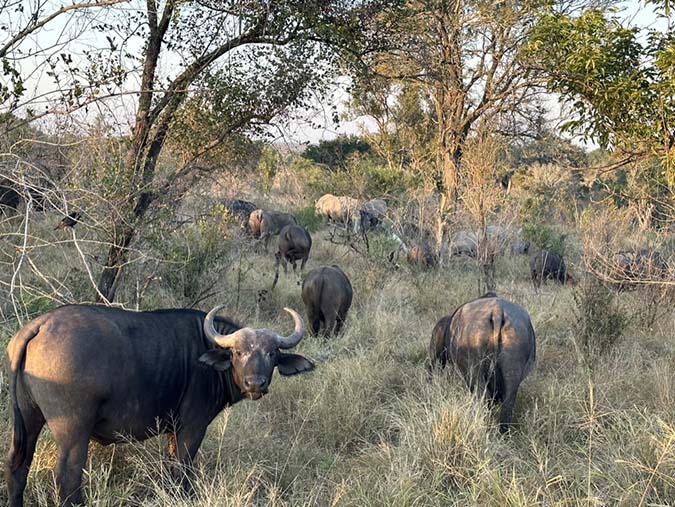
At a lodge like this one, you’ll have the option to go on a game drive in the morning and evening (usually around three or four hours, depending on your group and what you discover), and all meals are included.
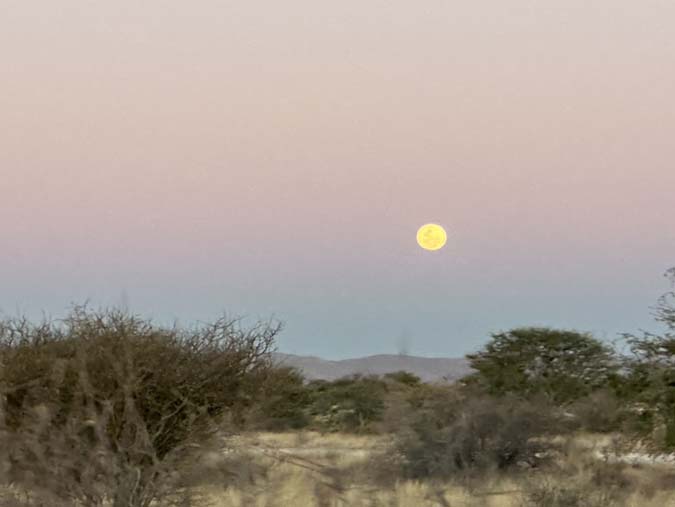
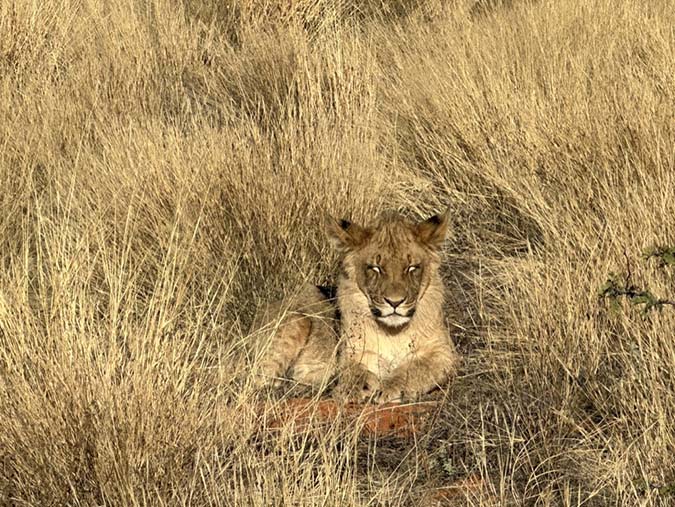
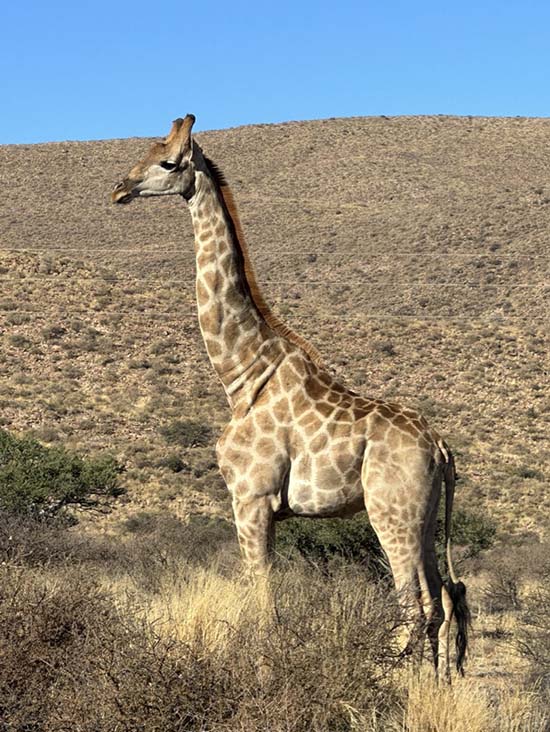
The Kalahari Desert
The Kalahari to the west is an entirely different landscape from Kruger — it’s a red sand desert and even the greener parts are pretty dry. But that makes for great game sightings and spectacular vistas where the savannah rolls into the mountains, and sunsets that are truly out of this world.
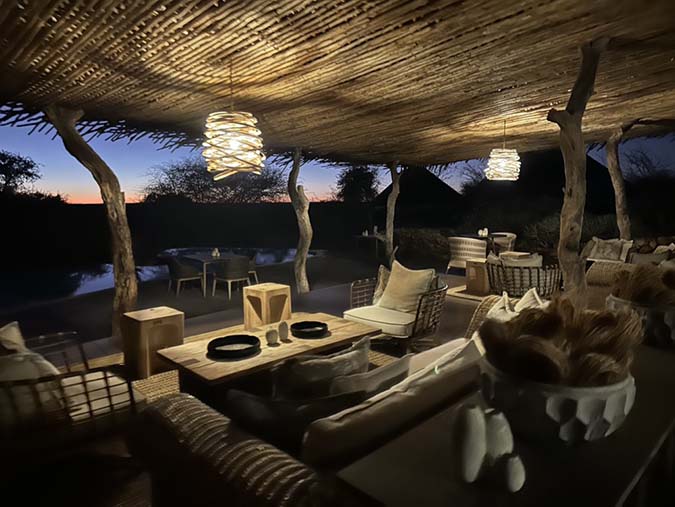
Staying where we did at Tswalu — one of the few camps in the giant Oppenheimer reserve — is simply magical, with cozy legaes (traditional clay and thatch dwellings) all kitted out with modern conveniences. Stay three nights and get a meal at Klein JAN, a world’s best restaurant, included. And the dining at the Motse camp where we stayed is world class as well!
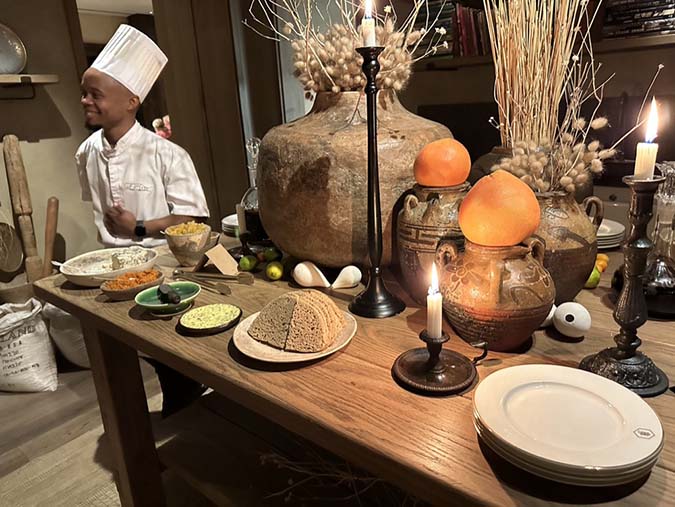
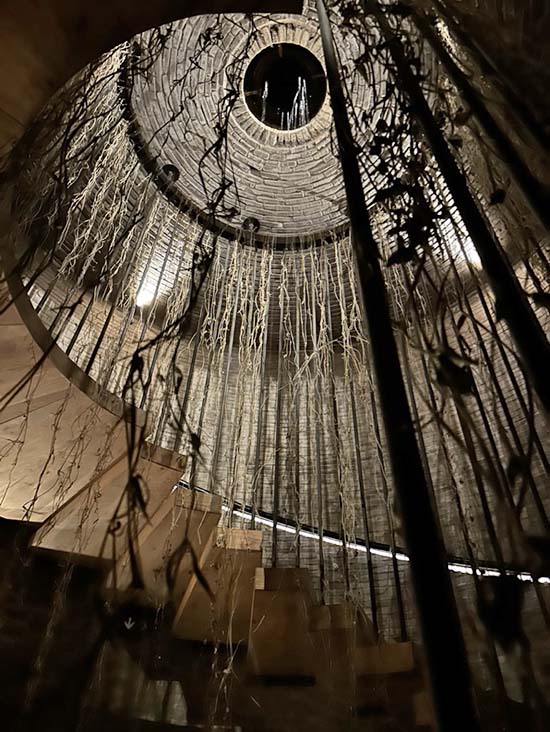
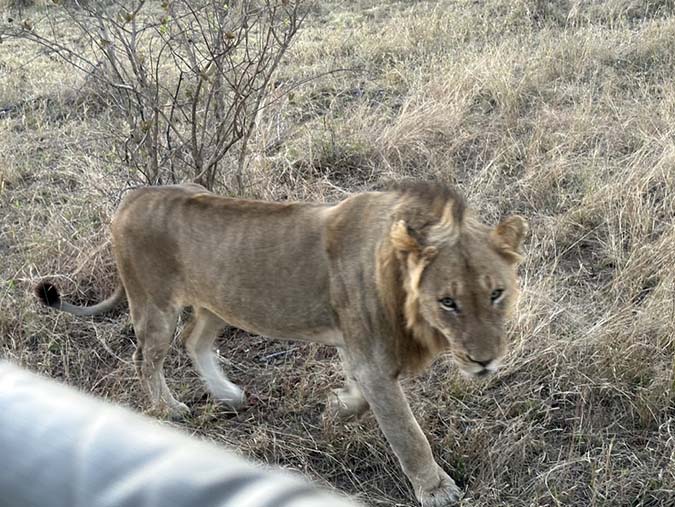
But what you are really there for is the animals! While every drive and visit is different, chances are you will see elephants, rhinos, buffalo, lions, leopards, cheetahs, hippos, and all kinds of antelope and gazelles. And plenty of birds! Generally game vehicles hold four to six people and your guide will know what animals are active and where on a given day (they have camera traps and are in communication via walkie-talkies throughout the parks).
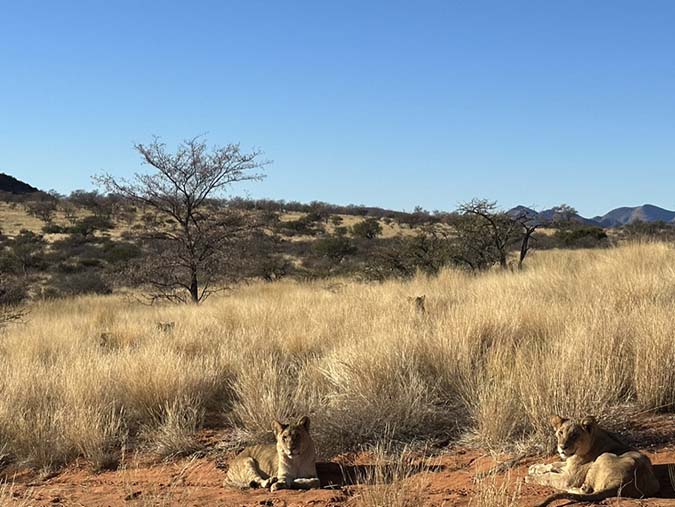
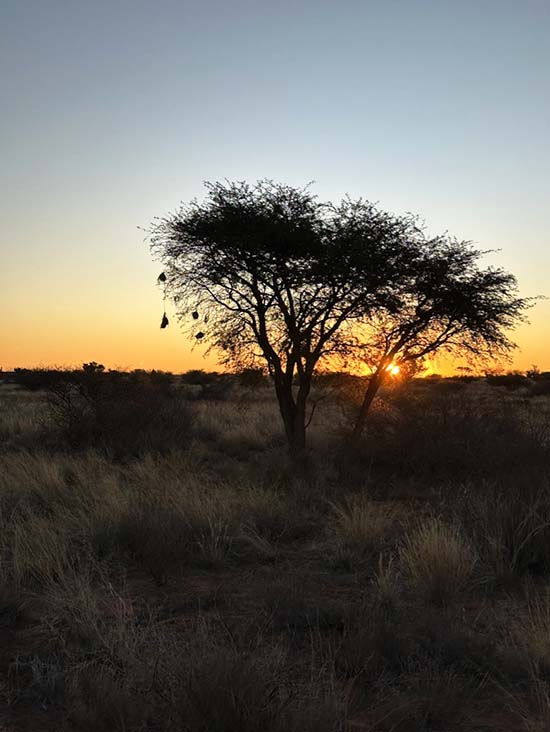
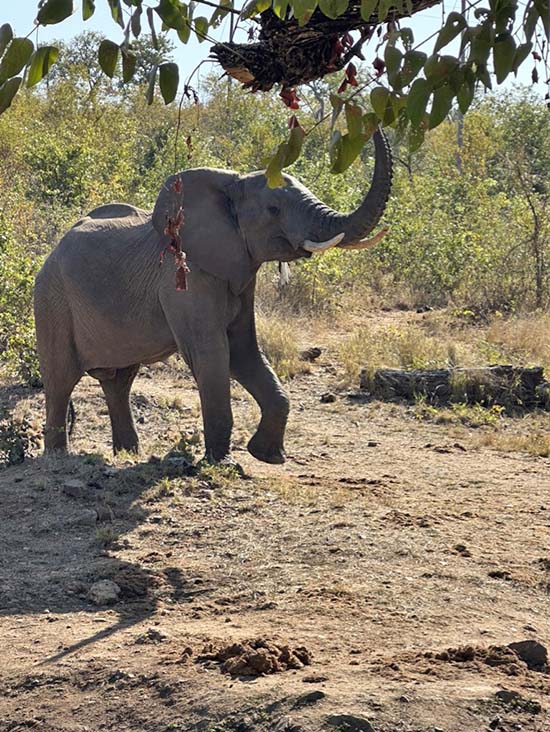
South Africa Safari Logistics
You’ll likely fly into Johannesburg or Cape Town and then take a smaller plane or internal flight to one of the airports near greater Kruger (usually HoedSpruit or Skukuza). We’d advise staying at several different camps for three or four nights each, so you can see different landscapes and types of animals. Also, being on safari means long drives (but you’ll stop often to see game, have sundowners or snacks, and more) and you’ll likely take a small bush plane or quick flight or two between camps — it saves tons of time and many camps have small airstrips or regional airports nearby.
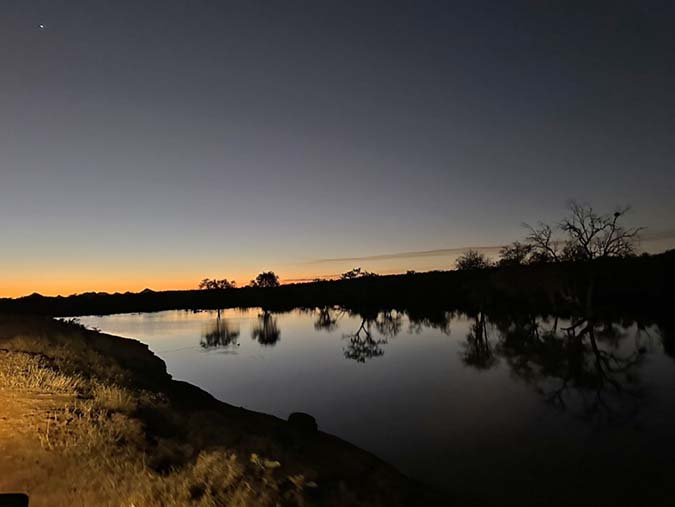
Know that while every season has something to offer on safari, their wintertime (summer in the northern hemisphere, so May/June through September) is a good time to see lots of wildlife, since the trees are more bare and the grasses and bushes are lower. Water levels in rivers, creeks, and watering holes are lower so animals have to travel further for water and food, also contributing to greater visibility. It’s still in the 70s and 80s (Fahrenheit) but it does get cooler once the sun goes down.
On the opposite end, summertime in South Africa is very green and hot, and you are more likely to see baby animals but the trees, bushes, and grasses are much higher, making game sightings challenging. But you will be warmer and the green season is lush and beautiful!
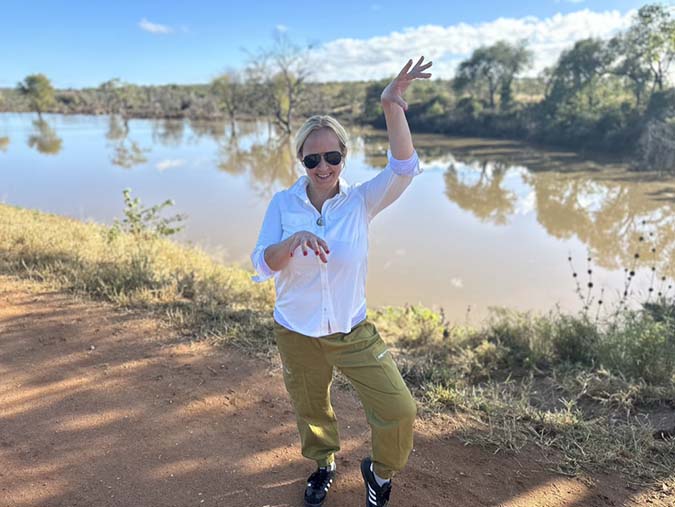
What to Pack On A South African Safari
All the khaki and olive you own! Seriously, you will want to blend into the landscapes a bit, but you’ll also want to be comfortable in the bushveld. It gets cold at night (even in their summers) and can be quite windy. You’ll want sturdy fabrics to protect you from thorns, burrs, twigs, and bug bites as well, especially for the walking safari aspects.
What You’ll Eat On Safari
Safari camp and lodge food tends to be simple and hearty! You’ll need it after a full day in the bush, after all. The meals at our lodges tended towards meat and potatoes (with a full British-style breakfast option) but there were veggie and even vegan options as well. You’ll be able to coordinate any special dietary needs ahead of time with your tour company. If you go to the Kalahari, splurging on a delightful experience at Klein Jan is definitely worthwhile!
Are you considering a safari or trip to South Africa, or have you already been? What is your favorite part? What animals did you see or want to see? Let us know in the comments or our Growing Younger Facebook Group!
– Jacqueline Zenn
Photos: Jacqueline Zenn for Fountain Of 30
You may also like to read more of Jacqueline’s travel guides like Travel Into The Wild: The Best Ways To Explore Patagonia, Travel: Escaping To Pura Vida In Costa Rica and Fountain Of 30 Travel Guide: What’s New, Buenos Aires!
Are you following Fountain Of 30 on Facebook, Twitter, Instagram and Pinterest? We’ve got lots going on, so join in on the fun! Subscribe to our newsletter here. You don’t want to miss a post and promise not to bug you to death. Join our Facebook Group called Growing Younger where women discuss everything good and bad about being over 50. Additionally Lauren hosts a bi-weekly podcast called Beauty is a Bitch! and an Instagram Live series called “Growing Younger Gabfest with Lauren.”
Please pin!
